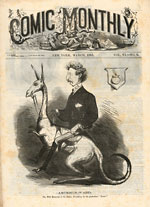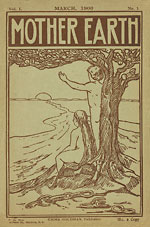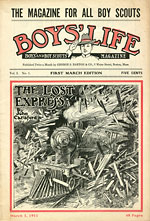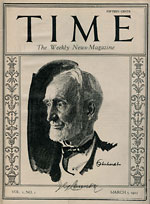Bedside Manor
The collection continues with two large rooms containing thousands of volumes and first issues of key American periodicals from 1800 to the present. “Lately,” said Lomazow, “I’ve been focusing on pulp magazines. The universe of pulps is about 1,000 titles. I have been trying to obtain the first issue of each and every one of them. Currently I’m about 165 short of completing the collection, an almost impossible task but a lot of fun trying. And to think—this all started with some positive reinforcement in second grade ‘show and tell!’”


According to Lomazow the first use of the word “magazine” in the context of a “storehouse” of information, was in Gentleman’s Magazine, which began publishing in London in 1731. In America, magazines have covered every aspect of the country’s popular culture with a “uniquely comprehensive textual and visual eye,” and the information on the Lomazow blog makes clear how important magazines have been in American history.
The section on periodicals from the 18th century shows the cover of John Peter Zenger’s New York Weekly Journal and here Lomazow writes, “With this issue Zenger initiated the debate over freedom of the press in America. His controversial writings brought about his trial and imprisonment by the colonial government and laid the groundwork for a basic tenet of democracy later codified in the First Amendment to the Constitution.”
Lomazow’s blog also discusses the first and second magazines published in America. The protean Ben Franklin planned to publish America’s first magazine but one Andrew Bradford, whose publication was called American Magazine, or, Monthly View of the Political State of the British Colonies, beat him to press by three days in January, 1741, and stole the credit. Franklin’s effort was called the General Magazine.
Printing and the products of the press were central to Franklin’s life. He learned the craft as an apprentice to his brother James Franklin, publisher of the pioneering Boston newspaper the New-England Courant. When he was 16, young Ben wrote an essay on freedom of thought published under the pen name Silence Dogood. It got the brothers Franklin into deep trouble with the Puritan authorities in Boston, for whom in 1722 the idea of freedom of thought was about as welcome as bubonic plague. After he moved to Philadelphia Franklin made enough money as a writer and printer to retire at 40, and in Colonial America only the Bible outsold Poor Richard’s Almanack.
Steve Lomazow also consults for the Washington, DC-based organization Newseum, which focuses on five centuries of news history and is located between the White House and the U.S. Capitol and adjacent to the Smithsonian museums on the National Mall. Here, a hundred choice examples from the Lomazow collection are on loan, publications central to the history of journalism in America. This grouping includes the November 1902 issue of McClure’s Magazine, which contains the first of a 19-part series, "The History of the Standard Oil Company," written by Ida Tarbell.
Today the phrase “malefactors of great wealth” is once again current, which makes the life and career of journalist/writer Ida Minerva Tarbell even more interesting than usual. She was one of the first “muckrakers,” early 20th century slang for investigative reporter. Tim Friend, a staffer at the Newseum, writes:
“Tarbell’s groundbreaking 19-part series, "The History of the Standard Oil Company," was published in McClure’s Magazine from 1902 to 1904. The exposé tracked John D. Rockefeller’s path to fortune and exposed shady deals that harmed honest businessmen, among them Tarbell’s father. Tarbell’s investigation inflamed readers’ passions, inspired journalists and led to new antitrust laws.
Steven Lomazow’s collection of Americana continues to grow as his collecting net spreads wider. “My girlfriend and I have begun to collect outsider art and mid-20th century material, dinnerware in particular,” he said. “You can get a lot of collecting bang for not too many bucks.”











